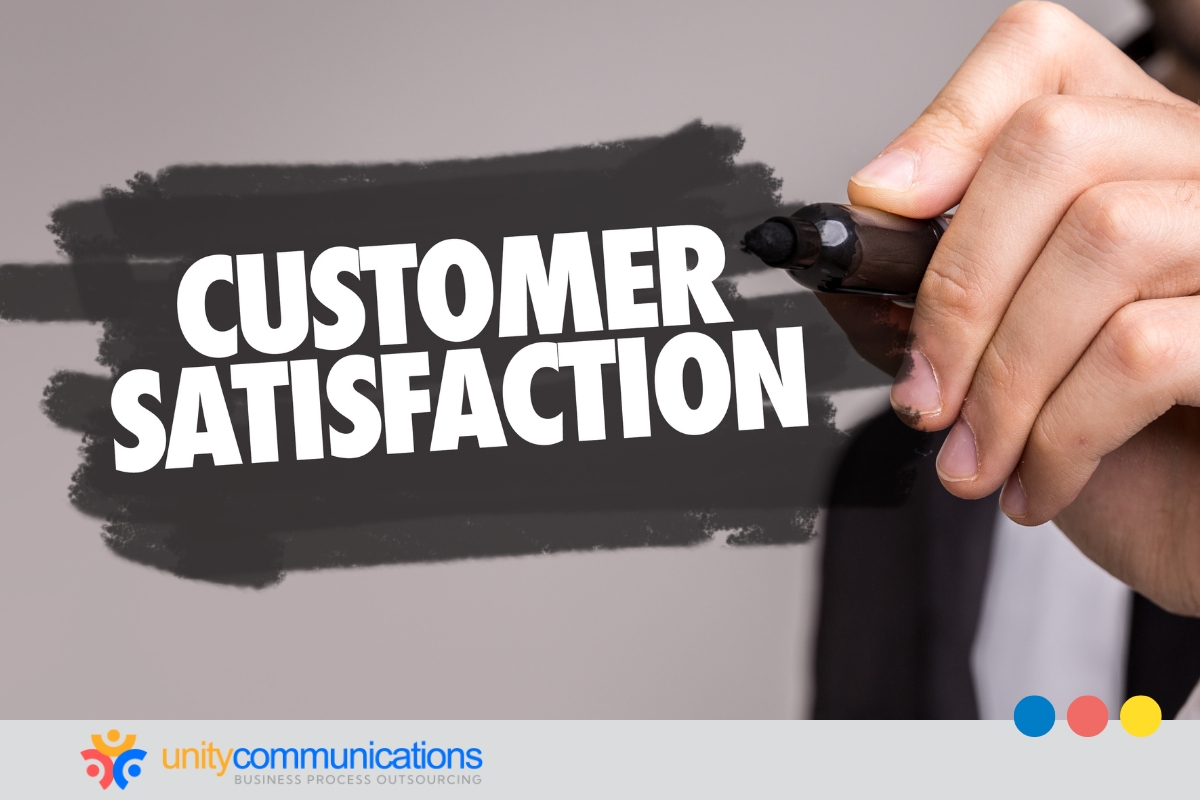Table of Contents
Companies with an efficient supply chain deliver products faster and respond better to market changes. But how do you maintain efficiency while scaling and adapting?
Business process outsourcing (BPO) is a great solution to address common bottlenecks in the supply chain. It streamlines operations, improves visibility, reduces costs, and provides access to specialized expertise and scalable resources.
This article delves into the most persistent fulfillment problems and the ways to achieve supply chain efficiency through outsourcing. Read below to learn more!
Beat these issues to achieve supply chain efficiency through outsourcing

Research shows that 79% of companies with high-performing supply chains can grow their revenue above the industry average. An efficient supply chain process ensures the timely delivery of goods. It reduces overhead costs and enhances customer satisfaction.
However, maintaining such efficiency is increasingly complex due to:
- Rising customer expectations
- Global disruptions
- Fluctuating market demands
- Shorter product life cycles
- Labor shortages and talent gaps
- Regulatory changes and compliance requirements
- Transportation capacity constraints and rising freight costs
- Greater emphasis on sustainability and ethical sourcing
More businesses are increasingly relying on BPO to overcome these challenges. Delegating supply chain functions such as procurement, logistics coordination, customer service, and demand forecasting helps eliminate the following common bottlenecks:
1. Inventory management issues
Problems in inventory management directly affect the flow of goods, capital, and information. Overstocking ties up capital to unsold goods, increases storage costs, and contributes to product obsolescence.
Understocking leads to stockouts, missed sales opportunities, and frustrated customers. Inaccurate inventory data misinforms production planning and purchasing decisions, compounding delays and increasing waste.
You can improve your supply chain by outsourcing inventory management. Specialized third-party logistics (3PL) companies resolve this problem in several ways:
- Advanced technology. Outsourcing partners use cutting-edge technology. One example is an inventory management system with real-time tracking, automated replenishment, and data analytics for better forecasting.
- Expertise and best practices. These providers use their knowledge and proven processes to reduce waste. For example, a BPO logistics partner might implement predictive analytics to prevent overstocking after seasonal sales.
- Reduced operational burden. Delegating routine inventory tasks frees up your internal resources. Your team can focus more on core competencies, such as planning and strategic decision-making.
- Improved demand planning. You gain better visibility into sales trends and inventory turnover. Outsourcing partners can align your supply closely with market demand to reduce excess and shortages.
- Faster fulfillment. Streamlined warehouse operations accelerate delivery times and improve customer satisfaction.
Expert support and advanced tools drive supply chain efficiency through outsourcing. They free up resources and improve accuracy.
2. Limited supply chain visibility
Another way to achieve supply chain efficiency through outsourcing is by enhancing visibility. The lack of data and oversight can prevent you from effectively tracking shipments, monitoring supplier performance, or anticipating disruptions.
Suppose your team cannot determine shipment delays. They might continue planning production or delivery based on inaccurate timelines, causing downstream slowdowns. Likewise, a lack of transparency among suppliers, manufacturers, and logistics causes duplication, communication gaps, and misaligned decisions.
Reliable 3PL partners resolve this problem through the following:
- Integrate advanced analytics platforms during planning. This approach could help you outperform competitors financially by 2.5 times.
- Provide access to dynamic dashboards for end-to-end visibility.
- Invest in artificial intelligence (AI) to forecast delays and enhance fulfillment network resilience.
- Consolidate data from transportation and warehouse management systems, suppliers, and internal logistics tools to simplify monitoring.
- Enable real-time shipment tracking to immediately identify and address bottlenecks.
- Standardize reporting formats across partners to minimize errors and streamline communication.
- Offer collaborative platforms to align stakeholder schedules and inventory levels.
These third-party BPO tactics prevent miscommunication and accelerate decision-making.
3. Transportation and logistics challenges
Transportation affects the movement and timely delivery of goods. Vehicle repairs, poor route planning, port congestion, or driver shortages can result in production slowdowns, missed delivery windows, and dissatisfied customers.
A third-party provider can optimize your supply chain by improving routes and modes. For example, a 3PL might consolidate shipments or switch from air to ground transport for specific regions to reduce delivery costs and carbon emissions.
These providers also collaborate with carriers, warehouses, and shipping partners to secure capacity during peak periods or disruptions. Outsourcing partners even provide shipment tracking and real-time updates. They help you monitor delivery status and proactively manage delays.
Optimizing transportation could lower supply chain costs by 15%. It also improves delivery reliability and enhances customer satisfaction through faster, more predictable fulfillment.
4. Labor shortages
Labor shortage slows down operations, increases errors, and compromises deliveries. For instance:
- Inadequate warehouse workers could delay order picking and packing. This causes shipment backlogs.
- Undelivered goods and congested distribution centers could happen when you don’t have drivers.
- Vacant C-suite positions affect supply chain planning or procurement. It leads to poor forecasting and costly mistakes.
Access to talent is one way to guarantee supply chain efficiency through outsourcing. BPO vendors provide skilled talent at a lower cost. They also eliminate the need to hire, train, and retain staff.
Niche 3PL providers specialize in specific functions. These range from order fulfillment to customer service or procurement. They train their teams and standardize procedures to reduce errors, expedite workflows, and maintain business continuity amid labor shortages.
5. Manual processes and outdated technology
Manual tasks such as data entry or spreadsheet tracking slow workflows and increase the risk of errors. Outdated systems lack real-time data, integration, and automation. You need them in today’s fast-paced supply chains. Inefficiencies lead to poor coordination between procurement, warehousing, and transportation.
Suppose you’re still using legacy software. Confirming orders or updating stock levels might take hours or days. These delays cascade through the supply chain, causing missed delivery deadlines, backorders, incorrect shipments, or inflated carrying costs due to buffer stock.
One of the benefits of outsourcing is access to modern platforms that improve speed, accuracy, and visibility. Examples include:
- Robotic process automation (RPA) eliminates manual entry. It automates purchase order creation, invoice matching, inventory reconciliation, and report generation.
- Barcode scanning and RFID provide real-time visibility into inventory movement. You can reduce shrinkage and improve order accuracy.
- Dynamic scheduling tools automatically adjust shipment and delivery timelines based on capacity, traffic, or weather conditions. You can reduce idle time and missed SLAs.
- AI-powered forecasting tools predict demand spikes, seasonality, or product-specific trends. They help align procurement and production with actual needs.
- Cloud-based dashboards and alerts offer centralized, real-time views of key performance indicators (KPIs), stockouts, delivery delays, and supplier performance.
- Enterprise resource planning (ERP) and transportation management system (TMS) integration centralizes supplier data, order status, and shipment tracking. It eliminates manual updates and discrepancies.
Outsourcing gives instant access to advanced tools that streamline operations, remove bottlenecks, and improve supply chain visibility. This helps you respond to demand quickly and accurately.
6. Poor communication and coordination
The supply chain involves many players who need accurate, timely information. The lack of communication can result in delayed shipments, incorrect orders, overproduction, or missed deadlines.
Outsourcing enhances communication by:
- Serving as the main link between all supply chain partners
- Establishing a clear communication hierarchy
- Centralizing platforms and communication touchpoints
- Managing information flow to avoid confusion
- Standardizing communication protocols and operating procedures
- Identifying escalation paths to address problems quickly
- Monitoring plan changes and proactively coordinating responses to prevent issues from worsening
These strategies help you achieve supply chain efficiency through outsourcing. They reduce ambiguity and promote faster, more accurate decision-making.
7. Inefficient reverse logistics
Reverse logistics handles returns, inspections, and restocking. It also covers refurbishing, disposal, and recycling. All these factors make it less predictable and more complex. Poor management slows warehouse operations, increases inventory inaccuracies, and erodes customer satisfaction.
3PL companies manage returns through custom processes, infrastructure, and trained personnel. They might set up dedicated return centers to quickly inspect, sort, and restock items. This reduces turnaround times and improves inventory accuracy. It also prevents reverse logistics from interfering with outbound operations.
Others utilize returns management systems. These tools track the product’s movement from return to final resolution. The visibility reduces the risks of lost returns, expedites refunds, and improves product decision-making.
BPO companies are also vital in ensuring reverse logistics compliance. Their responsibilities include:
- Maintaining accurate records for returned goods, especially for regulated items such as electronics, pharmaceuticals, or hazardous materials
- Managing recycling, disposal, or refurbishment per environmental laws
- Coordinating recalls, including notifying customers and properly disposing of or quarantining products
- Following data security regulations when handling electronics or IT equipment containing sensitive information
- Navigating customs, tariffs, and international shipping rules when managing returns from multiple countries
- Providing audit-ready logs and performance metrics to support compliance reviews and continuous improvement
Supply chain efficiency through outsourcing in reverse logistics means streamlining the process while complying with regulations.
The bottom line

Outsourcing to ease supply chain bottlenecks is vital to staying competitive in today’s global market. 3PL companies optimize workflows, reduce operating costs, and introduce processes that enhance customer satisfaction.
They leverage advanced technologies to manage returns, inventory, and logistics. The best team gathers real-time data to inform decisions and goals. With them, you can outperform competitors and build a more resilient supply chain.
Do you want more ideas on achieving supply chain efficiency through outsourcing? Let’s connect!



